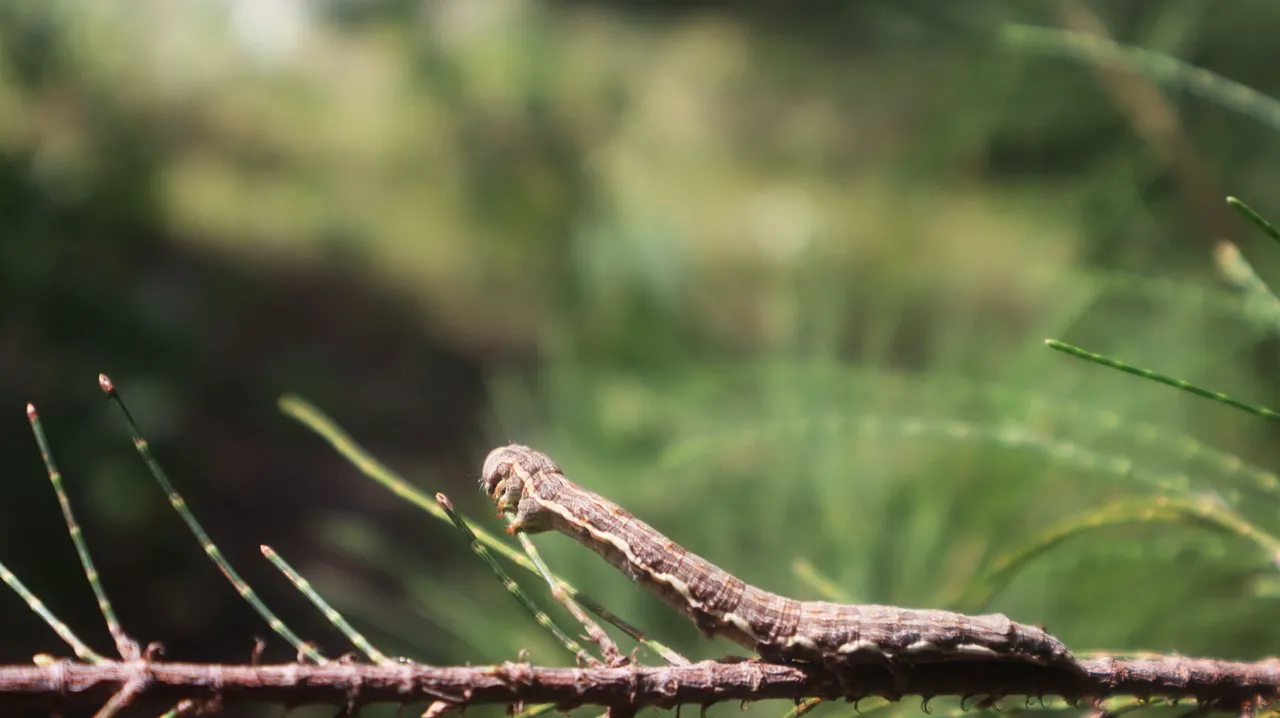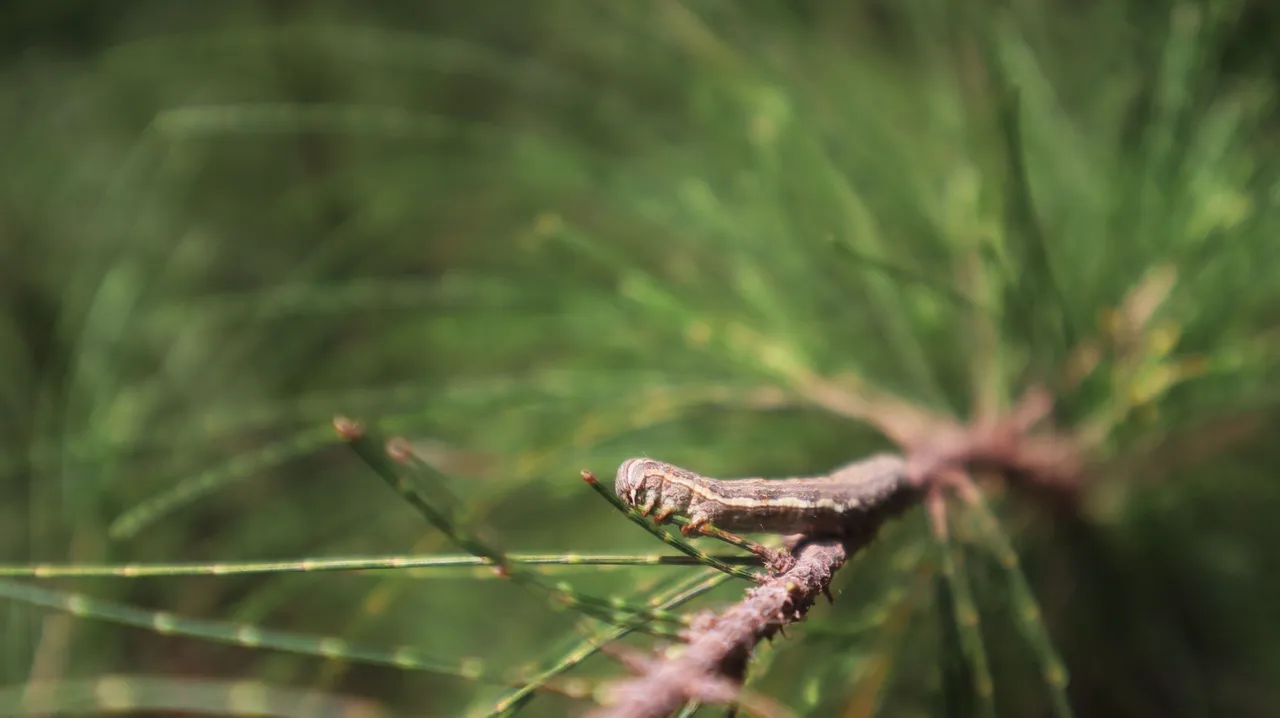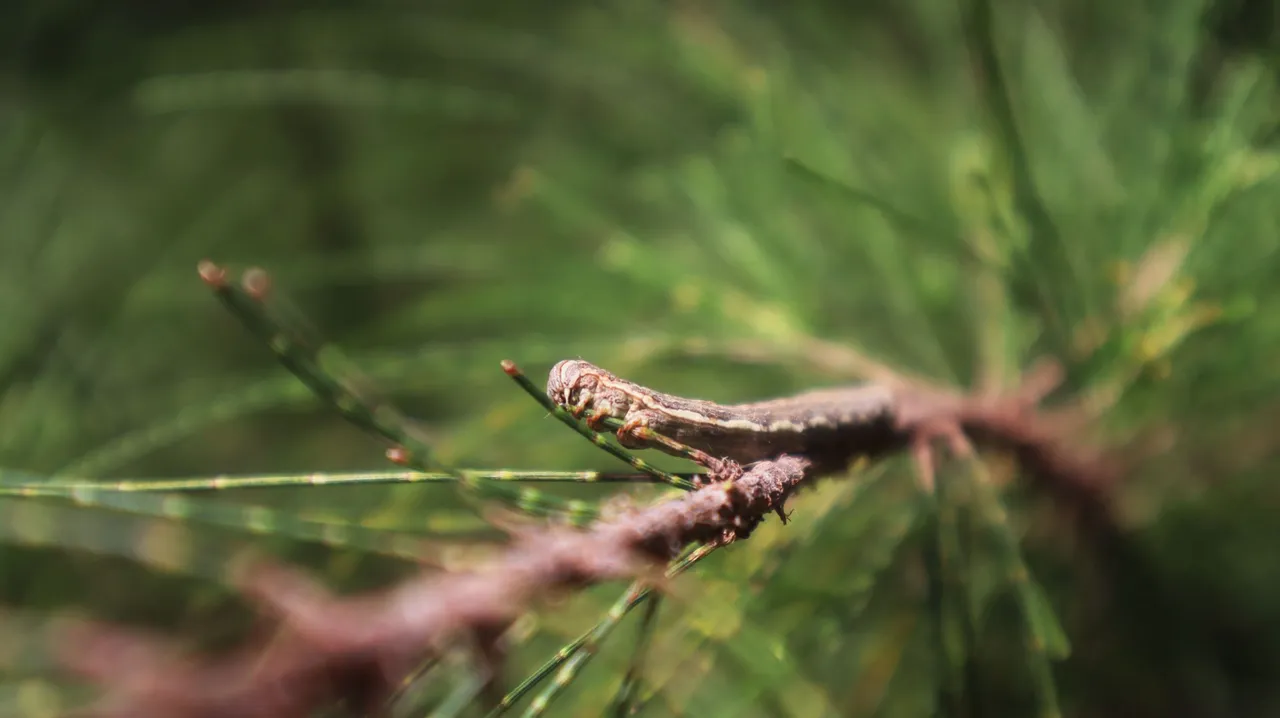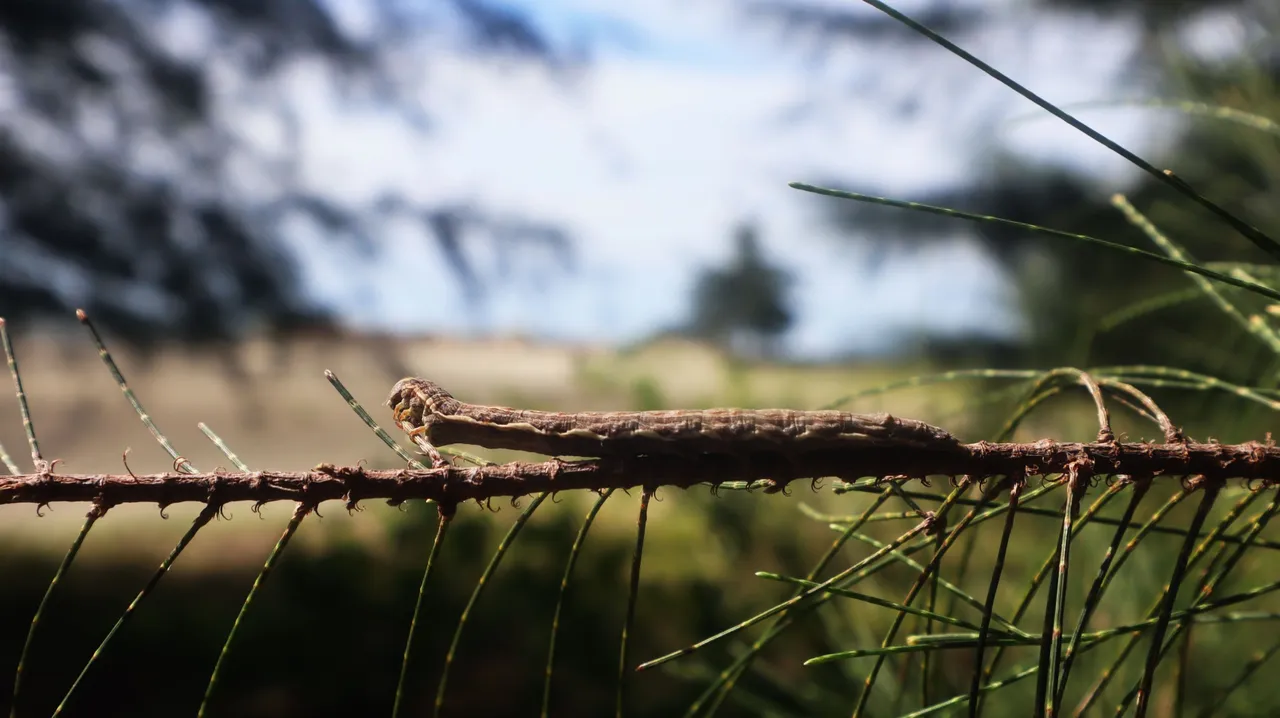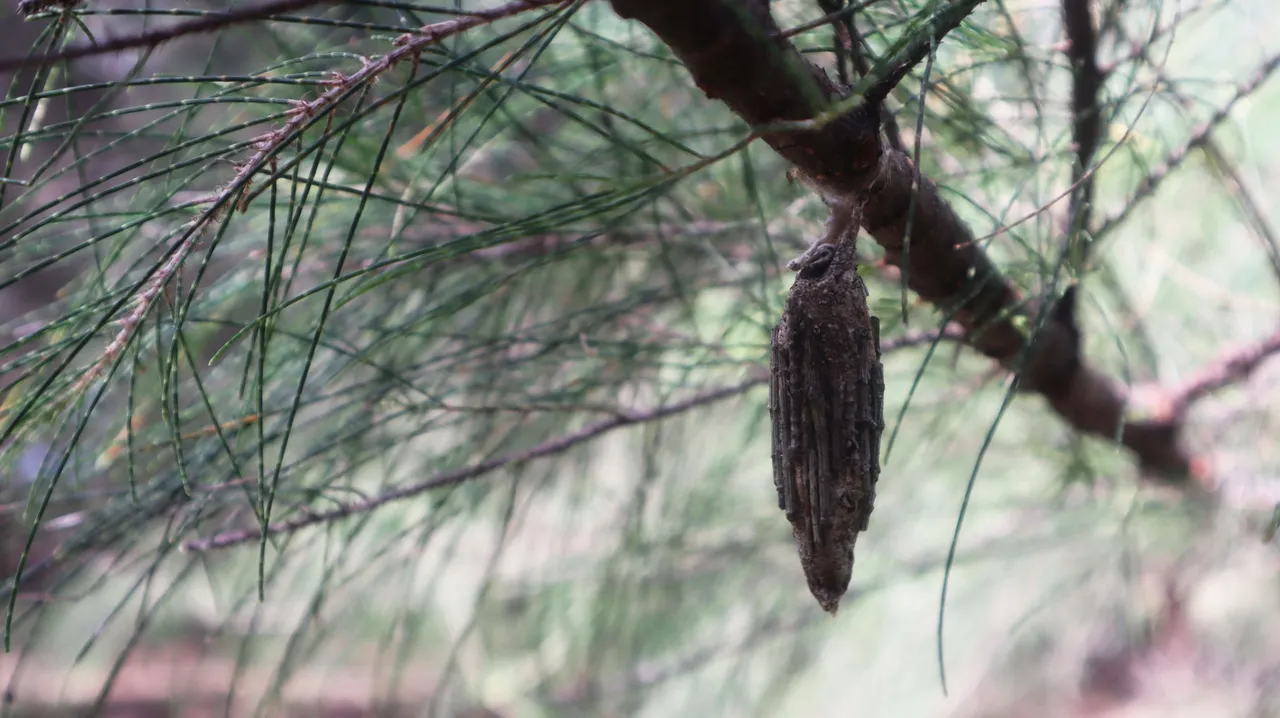
Its appearance looked almost like fruit hanging from a tree branch. But if you pay close attention to it, you immediately know that it is small twigs that have been arranged and shaped in such a way. They are essentially bags made of silk and the little twigs that pine trees provide. It is a "protective home" for the larvae of the bagworm moth, in the family Psychidae. Such a cocoon shape is able to camouflage them from predators.
On the branches of this pine tree, they can be seen in various sizes, with both ends narrowing. Therefore, they appear to be a specialized species of bagworms. They specialize in pines which are their host plants. It causes the death of their host plant as seen in these pictures. Adult bagworms can live long enough to mate and reproduce in their annual cycle.
(Source: Bagworm moth)

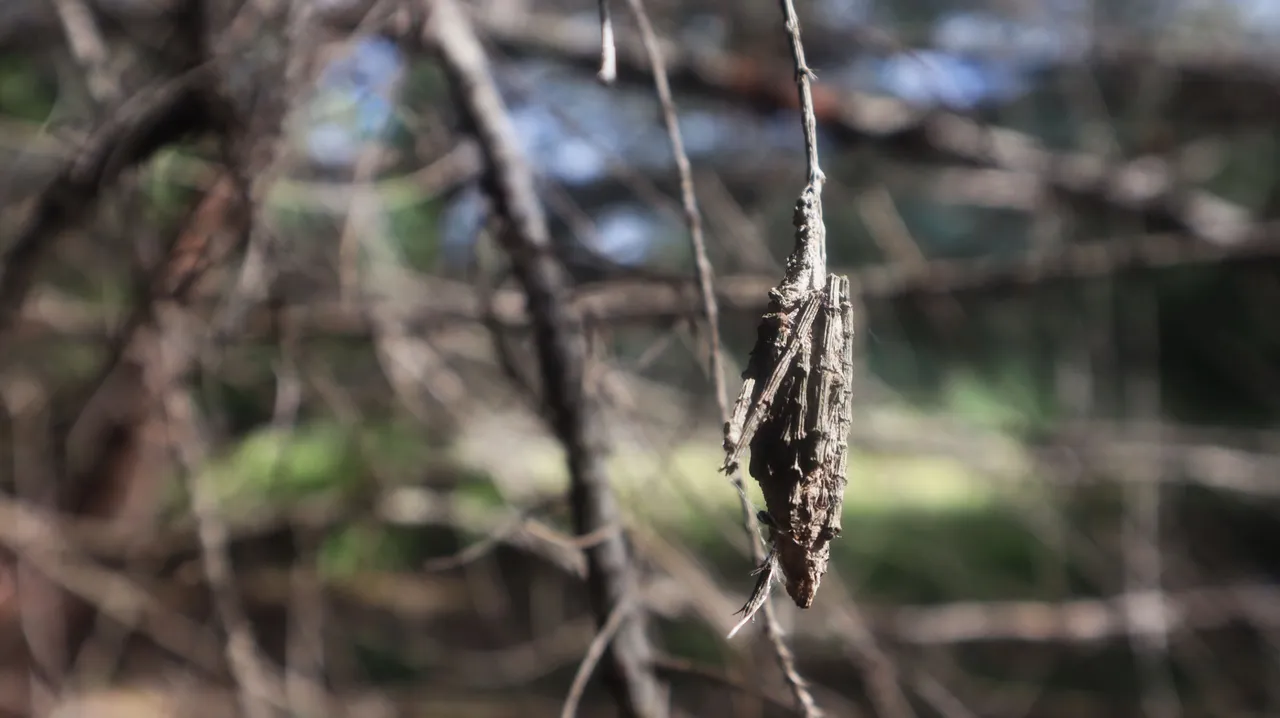
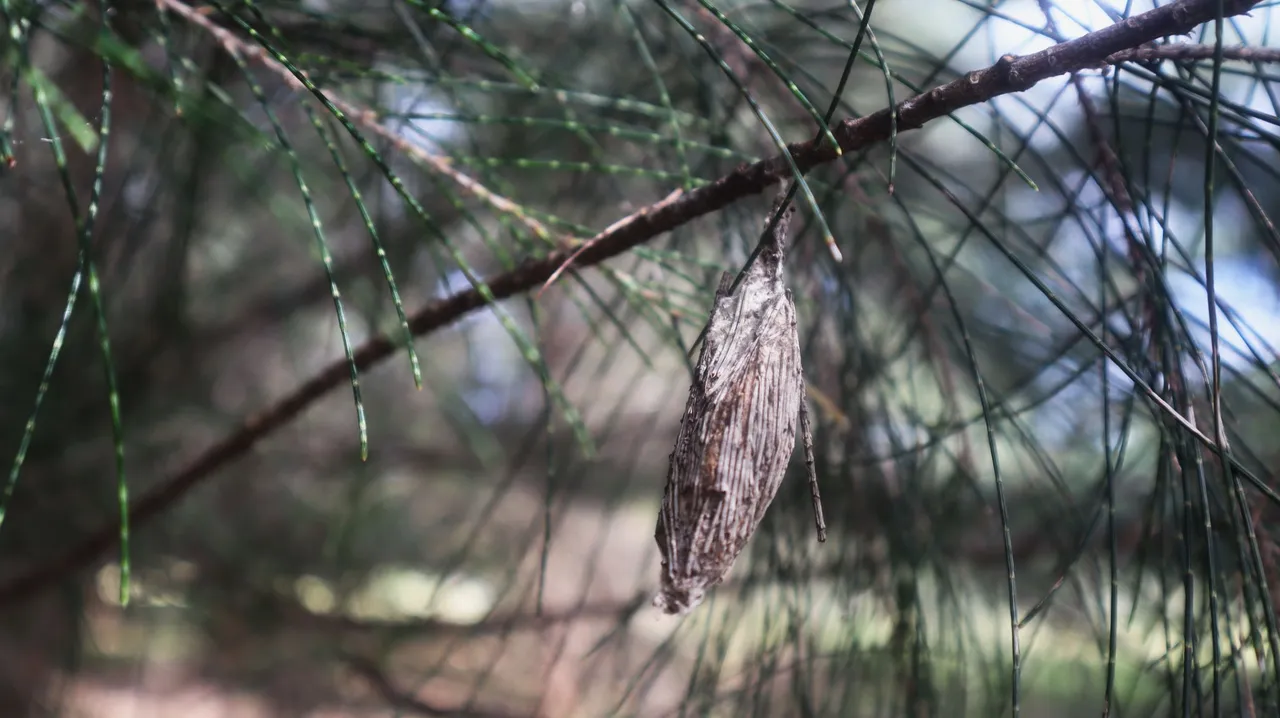
On another branch, a larva is seen happily chewing pine leaves. Apparently, it is a caterpillar of a moth, hairless like the larvae of Pine Sawfly (a species of wasp), but it is a caterpillar, because it has prolegs that are not the same as those of Pine Sawfly larvae.
